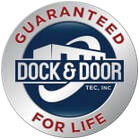|
There are several reasons why you should consider an external service provider for your docks and doors, but these are the top 3 that we hear often from our clients:
Over the past 16+ years we’ve heard many reasons why facility managers view a proactive maintenance program (PMP) as a smart investment.
Here’s the top 5 reasons why you should transition from a reactive to a proactive approach when maintaining a top-notch facility:
Can we help you become proactive? Based on common sales inquiries, here are the top three questions we receive:
We recently sat down with our OSHA Specialist to learn what their data says about the three biggest safety risks associated with loading docks.
Here's what OSHA recommends to prevent accidents and minimize risks:
We asked this question of hiring leaders to better understand the challenges our clients face when maintaining top-notch talent in their operations. Here’s what they shared:
In summary, employees working in a facility with loading docks and doors are looking for a safe, comfortable, and supportive work environment that values their contributions and provides opportunities for growth and development.
Best of luck to you and your team! |
AuthorVarious. Categories
All
Archives
August 2023
|
- Home
- About
- Career Opportunities
- Services
-
Equipment
- Dock Locks (Truck Restraints) >
- Fans & In-Plant Equipment >
-
Industrial / Commercial Doors
>
- High Speed Fabric Doors
- Security High Speed
- Rubber Doors
- Fire Door
- Rolling Steel
- Impactable Dock Doors
- Cooler / Freezer
- Fabric Roll-Up
- Impact / Traffic / Bump
- Overhead / Sectional Doors
- Operators / Activation
- Air Curtains / Screen & Bug Doors
- Strip Doors
- Door Entrapment Protection
- Door Protection
- Overhead Door Upgrades
- Loading Dock Levelers & Lifts >
- Loading Dock Seals & Shelters >
- OEM & Aftermarket Parts
- Safety / Energy / Security / Employee Comfort >
- Yeti Snow Removal
- Markets
- Blog
- Contact
Dock & Door Tec
Serving Minnesota, Wisconsin, Iowa, North Dakota & South Dakota
Serving Minnesota, Wisconsin, Iowa, North Dakota & South Dakota





 RSS Feed
RSS Feed
